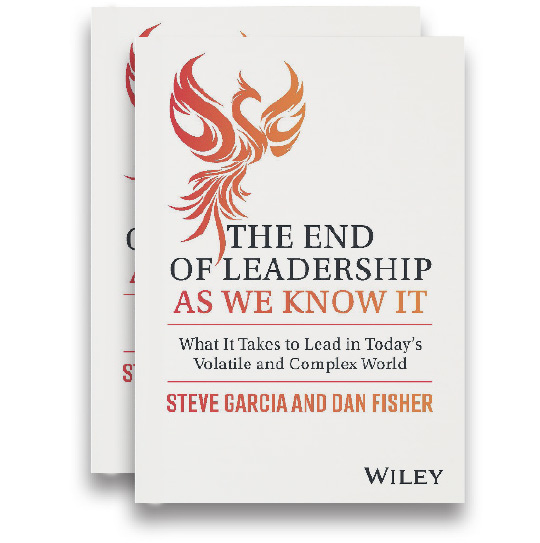In the late 90s, the US Army War College started using the term VUCA to refer to the Volatility, Uncertainty, Complexity, and Ambiguity that characterize battle conditions. More recently, it has been used to describe the business conditions that corporate leaders need to navigate to succeed in today’s world.
When we try to unpack these four elements and help leaders figure out exactly what they need to do differently, we see that the VUCA framework is potentially misleading. Just two of these elements – Volatility and Complexity – are actually the driving forces, with Uncertainty and Ambiguity being side effects. A slight reframing, as explained below, makes it a far more useful tool for leaders.
Volatility. To start with, the pace of change is accelerating. Not only is change happening faster, but different kinds of things are changing, in different ways. So it’s harder to predict the implications for different kinds of change, and what changes are right around the corner. Leaders need new ways to understand and adapt to volatility – rapid, disruptive change. Personal and organizational agility – the ability to learn and adapt quickly – are essential. Volatility and the accelerating pace of change are explored in detail in our next blog.
Complexity. At the same time, the world is increasingly interconnected and interdependent, amplifying the complexity of making decisions. To make sense of this complexity, leaders need to think more systemically — step back and see the bigger picture – and act more strategically, by anticipating the longer-term, second- and third-order consequences of their actions. How leaders can thrive in the face of complexity is the topic of our third blog in this series.
As rapid change and unexpected consequences ripple through our lives, people experience Ambiguity and Uncertainty. Most people are uncomfortable with ambiguity and uncertainty, and at high enough levels they may experience fear and confusion. In the face of ongoing ambiguity and uncertainty, it’s difficult to know the right course of action, so people become more cautious, more reactive, and more self-protective. It’s easy to point fingers and blame others when targets are missed.
At a basic level, then, the best leaders approach Complexity and Volatility with a cognitive lens – search for patterns, make sense of what’s happening, anticipate and plan for potential obstacles and opportunities. In parallel, they approach ambiguity and uncertainty with an emotional lens – build psychological safety and trust, listen with empathy and compassion to fears and concerns, acknowledge and value diverse views and opinions, foster a sense of community and connection.
In VUCA times, two complementary actions are useful for organizational leaders:
1. Cultivate clear mission, vision, and values to provide stability and help people focus on what’s most important. Having a clear sense of what we stand for and where we’re headed enables a shared sense of meaning and purpose that encourages collaboration and teamwork.
2. Once you have a clear strategic foundation, you can then build the organization’s capabilities and discipline to act decisively and adapt quickly. Working in small steps toward a higher-level goal enables you to learn and adjust as you go, so you can reflect on what you’re learning and pivot quickly when appropriate. Leading in this fashion is similar to E. L. Doctorow’s view of writing; it’s “like driving at night in the fog. You can only see as far as your headlights, but you can make the whole trip that way.”
David’s second and third blogs in this series will explore a deeper dive into Volatility and Complexity, and the fourth blog will conclude with an integrated guide to how leaders can optimize how they lead in VUCA.
